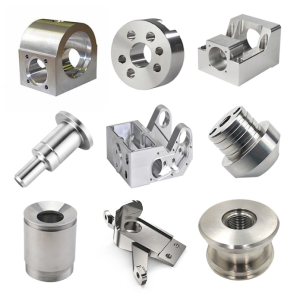Aero-Engine Major Components Structure
Introduction
An aero-engine is a highly complex and sophisticated thermodynamic machine. As the heart of an aircraft, it not only provides the power for flight but also serves as a crucial driving force for the development of aviation. Every major breakthrough in the history of human aviation has been closely tied to the technological advancements of aero-engines. This article focuses on introducing the major structural components of aero-engines.
Aero-Engine Major Components Structure
Cold-end core components. During engine operation, the blades are subjected to centrifugal force, aerodynamic forces generated by air and gas, thermal stress, alternating forces, and random loads, accounting for more than 30% of the workload in the entire engine manufacturing process. Under the action of various loads, blades are highly susceptible to high-cycle fatigue and thermal fatigue. To ensure work quality and efficiency, the material selection and manufacturing process of blades have extremely high requirements.

Image: Structure of a Turbofan Engine
According to their location and function, engine blades can be classified into fan blades, compressor blades, and turbine blades. Among them, fan blades and compressor blades are cold-end components, while turbine blades belong to hot-end components.
Compressor blades further compress the air entering the engine. The compressed air is divided into two paths: one enters the inner duct for further compression, and the other enters the outer duct and is directly discharged at high speed, generating thrust.
Compressor blades further compress the air entering the inner duct, significantly increasing the air pressure and temperature to meet the requirements of the combustor. Turbine blades, on the other hand, have an expansion and decompression effect, which can convert the chemical energy of the gas into the mechanical energy of the turbine.
Blade materials include aluminum alloy, stainless steel, titanium alloy, high-temperature alloy, and composite material blades. Fan and compressor blades belong to cold-end components and operate at relatively low temperatures. They are generally made of titanium alloy, high-temperature alloy, and other materials. Among them, titanium alloy is widely used in the production of compressor blades due to its low specific gravity, high specific strength, and corrosion resistance, making it a significant contributor to weight reduction.

Image: Fan Blades
Manufacturing process. Compressor blades have thin profiles and are prone to deformation. Precisely controlling their forming accuracy and high-efficiency, high-quality processing are the core challenges in the blade manufacturing process. Among all types of blades, compressor blades are one of the most complex aerodynamic structural components and operate in the harshest working environment in aero-engines.
To reduce aerodynamic losses, the most significant feature of compressor blades compared to blades in other parts is their complex profile twist and the thin thickness of the blades themselves. The complex profile twist is specifically manifested in the different blade twist angles from the root to the tip. On the other hand, the thickness of the leading and trailing edges of the blade is only 0.1-0.2 mm, and the profile accuracy requirement is high.
Image: Compressor Blades

II. Turbine Blades
Hot-end components. Turbine blades belong to the hot-end components of aero-engines and need to operate in a high-temperature and high-pressure environment. They are the most challenging blades to manufacture in turbofan engines. The high-temperature and high-pressure gas expands and does work in the turbine, driving the turbine to rotate at high speed to drive the compressor. The air flows through the turbine outlet into the tailpipe, where the pressure decreases and the velocity increases, finally being discharged from the engine to generate power.

Image: Turbine Blades
The structure and materials of turbine blades have been continuously upgraded and replaced. In the mid-20th century, the second-generation engines were mainly used, with a typical model being the Spey MK202. It mainly used solid turbine blades. After that, more advanced hollow turbine blades were gradually used. The fifth-generation engine F135 has adopted double-wall supercooled/cast cooled turbine blades.
Turbine blades are generally made of high-temperature alloy or titanium aluminum alloy and processed into high-quality blade blanks with small allowance and high quality through precision casting. With the improvement of engine performance, high-pressure turbine blades have gradually developed into directionally solidified and single crystal material blades.
Directional solidification is a casting process in which the molten alloy is solidified and crystallized in the direction opposite to the heat flow in a mold with a

III. Other Components
1. Disk Components
Mainly including turbine disks, compressor disks, and integral disks. The integral disk structure is a new type of integrated disk structure developed on the basis of the conventional disk separation structure. It has the advantages of weight reduction, stage reduction, efficiency increase, and reliability improvement. The materials are generally selected from titanium alloy and high-temperature alloy.
Turbine disks and compressor disks are both rotating components of aero-engines. The turbine disk is a component used to install and fix turbine blades to transmit power on aero-engines. It bears complex loads under high-temperature, high-pressure, and high-speed working conditions.
2. Casing
The main load-bearing component on aero-engines, it is a key component that bears the load and encloses the engine. It is a typical thin-walled structural part.
Its main functions are:
- To protect the core engine of the aero-engine and provide support for external engine components such as fuel pump, oil pump, generator, and gearbox, as well as pipelines;
- The inner side mainly installs the stator and combustor, and together with the rotor assembly, constitutes the air flow passage.
According to their functions, casings can be classified into fan casings, outer casings, intermediate casings, compressor casings, and combustor casings. Casing materials are mostly titanium alloy and high-temperature alloy. During processing, it is necessary to focus on controlling the high-precision geometric tolerance and thin-wall machining deformation.
IV. Conclusion
Aero-engines are highly complex and sophisticated systems with numerous components. Each component plays a critical role in ensuring the engine’s performance, reliability, and efficiency. The continuous advancement of aero-engine technology is driven by the relentless pursuit of higher thrust, lower fuel consumption, and longer service life.


